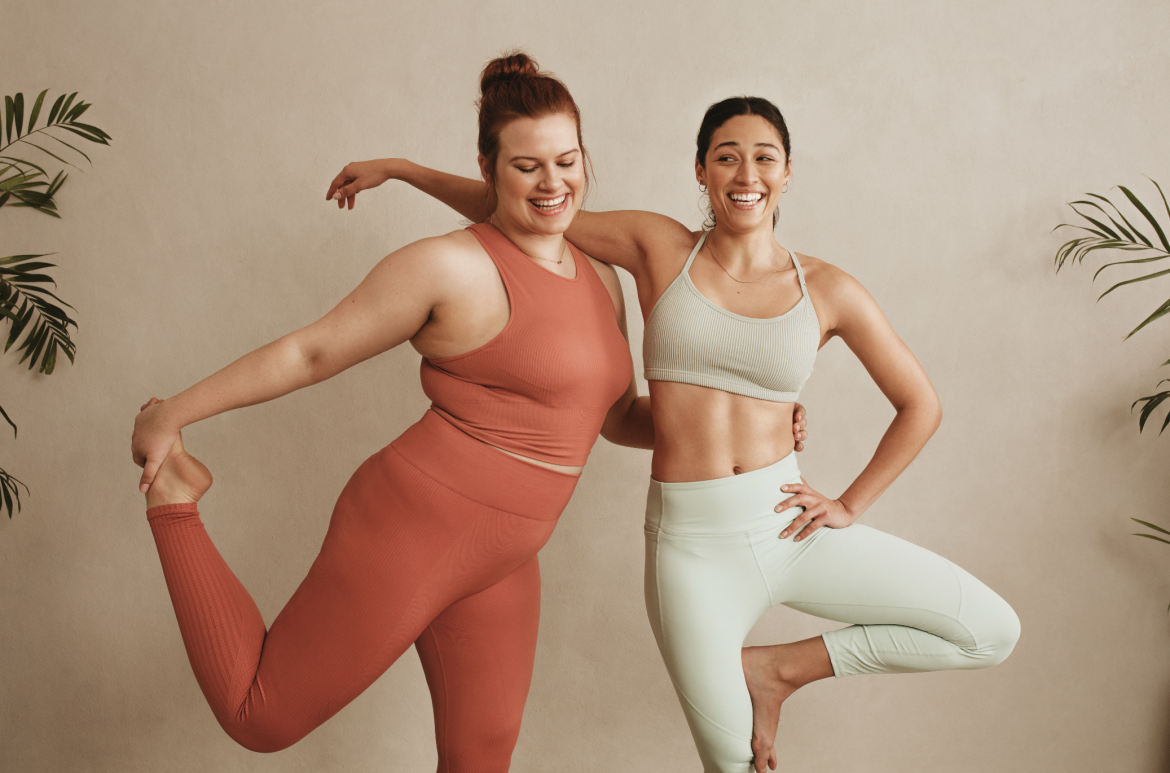How would you rate your health? Did the pandemic bring out your love for cookies and cream? A quick home health check is a lifesaver. ‘Certain measurements and readings can give a clear perspective of your health and serve as benchmarks,’ says pharmacist Abbas Kanani. ‘These numbers also motivate people to take steps to try to improve it.’ Here are the easy tests you need to take today…
1. THE LEG RAISE EXPERIMENT
✣ What it measures: Flexibility
✣ How to do it: Lie on the floor with your legs flat. Inhale and lift your arms above your head, then as you exhale, lower your arms and use your hands to lift your left leg up towards the ceiling, trying to keep your leg as straight as possible. Repeat on the other leg.
✣ Results: Raised leg half bent = needs work Raised leg almost straight = average Raised leg straight = excellent
✣ Leg boost: Look on YouTube for yoga or Pilates classes to practice poses.
2. THE CUSHION TEST
✣ What it measures: Artery health
✣ How to do it: Lie on your back on a bed and elevate both (bare) legs to a 45° angle on cushions. Hold them there for one minute, then quickly hang your legs down over the side of the bed at 90°.
✣ Results: This checks for peripheral arterial disease, where the arteries that supply the leg muscles become furred up and can cause high cholesterol, high blood pressure, and diabetes. If one or both of your feet or legs become very pale when elevated but take several minutes to return to their normal colour, or become bright red when hanging, you could have blocked arteries and need to see your doctor.
3. THE RESTING HEART-RATE TRICK
✣ What it measures: Physical fitness
✣ How to do it: You’ll need a stopwatch. To find your pulse, put your middle and index finger on the inside of your wrist. Count how many beats you feel in 20 seconds, and multiply by three for your resting heart rate.
✣ Results: A normal resting heart rate is between 60 and 100 beats per minute. However, some research indicates that a rate of 80 or above is worth tackling. The slower your resting heart rate, the more efficiently your heart is pumping blood around your body, and is an indicator of physical fitness. See a GP if your resting pulse is over 100 or below 60 (unless you’re an athlete), or if it skips beats or doesn’t keep a regular rhythm.
4. THE QUICK EYE INSPECTION
Age-related macular degeneration can cause you to lose central vision. Cover an eye, then the other – looking at a door frame. If there are gaps or kinks when it should be straight, see a GP or optometrist at once.
5. THE WAIST-TO-HIP RATIO CHECK
✣ What it measures: Your risk of coronary heart disease, hypertension and diabetes
✣ How to do it: Find the narrowest area between your belly button and the bottom of your breastbone. To measure your hips, stand so you can see your side view in a mirror and measure the widest part. Then divide waist by hip measurement.
✣ Results: Less than 0.75 = ideal 0.75-0.8 = low risk 0.81-0.85 = moderate risk Greater than 0.85 = high risk
✣ Slimming boost: If your ratio is 0.81 or above, eat a balanced diet, avoid processed foods, and build some squats and lunges into your workout.
6. THE STAIRS TRIAL
✣ What it measures: Lung/ heart health
✣ How to do it: Briskly run up two flights of stairs.
✣ Results: If you can do this without pausing to rest, your lungs are in fairly good shape. If you experience extreme shortness of breath or have to stop, it’s a sign that your lungs are suffering some degree of distress.
✣ Lung boost: Get active for 30 minutes each day to increase the efficiency of oxygen transportation and metabolism.
7. THE UP & DOWN ASSESSMENT
✣ What it measures: Longevity
✣ How to do it: Carefully lower yourself from standing to sitting cross-legged on the floor. Then get back up. The maximum score is 10 – five points for sitting and five for standing back up. Lose a point every time you use a hand or knee for support, and half a point every time you wobble.
✣ Results: ‘In a study of 51- to 80-year- olds, those with the lowest score were five to six times more likely to die in the next six years,’ says physiotherapist Sammy Margo.
✣ Life boost: Don’t panic – just take it as a sign you need to make changes now, such as getting more active. Aim for 150 minutes of moderate-intensity activity a week. And keep practising.
It’s easier to get a higher score if you repeat regularly.
8. THE PALM READER
Hold out your hand, palm up, and push your fingers back. Your palm will pale, but if the deep lines go white too, it could be a sign of anaemia – often triggered by lack of iron in the diet. Ask your GP for a blood test.
ALSO SEE: IS YOUR SLEEPING POSITION AGEING YOU?

